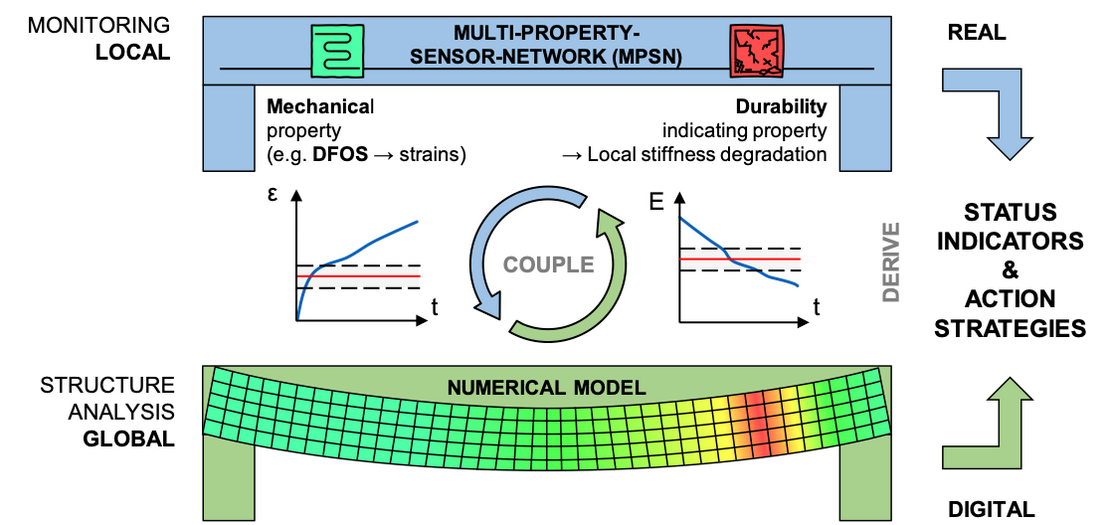Damage detection and evaluation based on combined multi-property sensor net-works and high-fidelity numerical system identification
The monitoring of infrastructure structures in Germany is becoming increasingly important due to their advancing age and the continuous increase in damage (material degradation) re-sulting from load-dependent and load-independent effects. The main objective of the proposed research project is to couple mechanical and durability-indicating measurement data from structural monitoring (local) via numerical structural models (global) in order to derive condi-tion indicators and intervention strategies for the structure, see Figure 1.

The methodological coupling of the mechanical and durability-indicating data of the multi-property sensor network in the highly parameterized numerical structural model allows an improved calibration (“twinning”) of the underlying, high-resolution finite element model. Based on this, a concept for a multi-criteria evaluation (see Figure 2) is developed and prototypically implemented, which enables the derivation of condition indicators for the structure and can thus serve as a basis for predictive maintenance management. In addition to the localization of damage, a classification can also be carried out automatically. This creates a single source of truth that serves as a basis for assessing the damage regarding structural safety.

The following specific milestones are to be achieved: (a) Establishment of a multi-property sensor network for the coupled acquisition of mechanical and durability-indicating measure-ment variables. (b) Merging the different sensor information for a holistic assessment of the structural condition and increasing the information density for the numerical sensitivity analy-sis, both in terms of qualitative characteristics (damage type) and quantitative characteristics (stiffness loss). (c) Increasing the robustness and facilitating plausibility checks through com-bined multi-property sensor networks. (d) Validation of the newly developed numerical meth-ods based on adjoint sensitivity analysis for coupling different measurement variables with the help of large-scale laboratory tests. (e) Creation of a single source of truth that enables dam-age classifications in order to assess damage in relation to structural safety and to derive significantly more precise recommendations for intervention through better knowledge of the specific causes of damage.
The main objective and the specific milestones described above are to be implemented through six work packages. These can be assigned to the established levels of structural health monitoring (SHM) in construction maintenance management, see Figure 3.

Team
Publications
[1] A. Potnis, M. Macier, T. Leusmann, D. Anton, H. Wessels und D. Lowke, „Model-based reinforcement corrosion prediction: Continuous calibration with Bayesian optimization and corrosion wire sensor data,“ 2024. arxiv.org/pdf/2411.16447v1.




